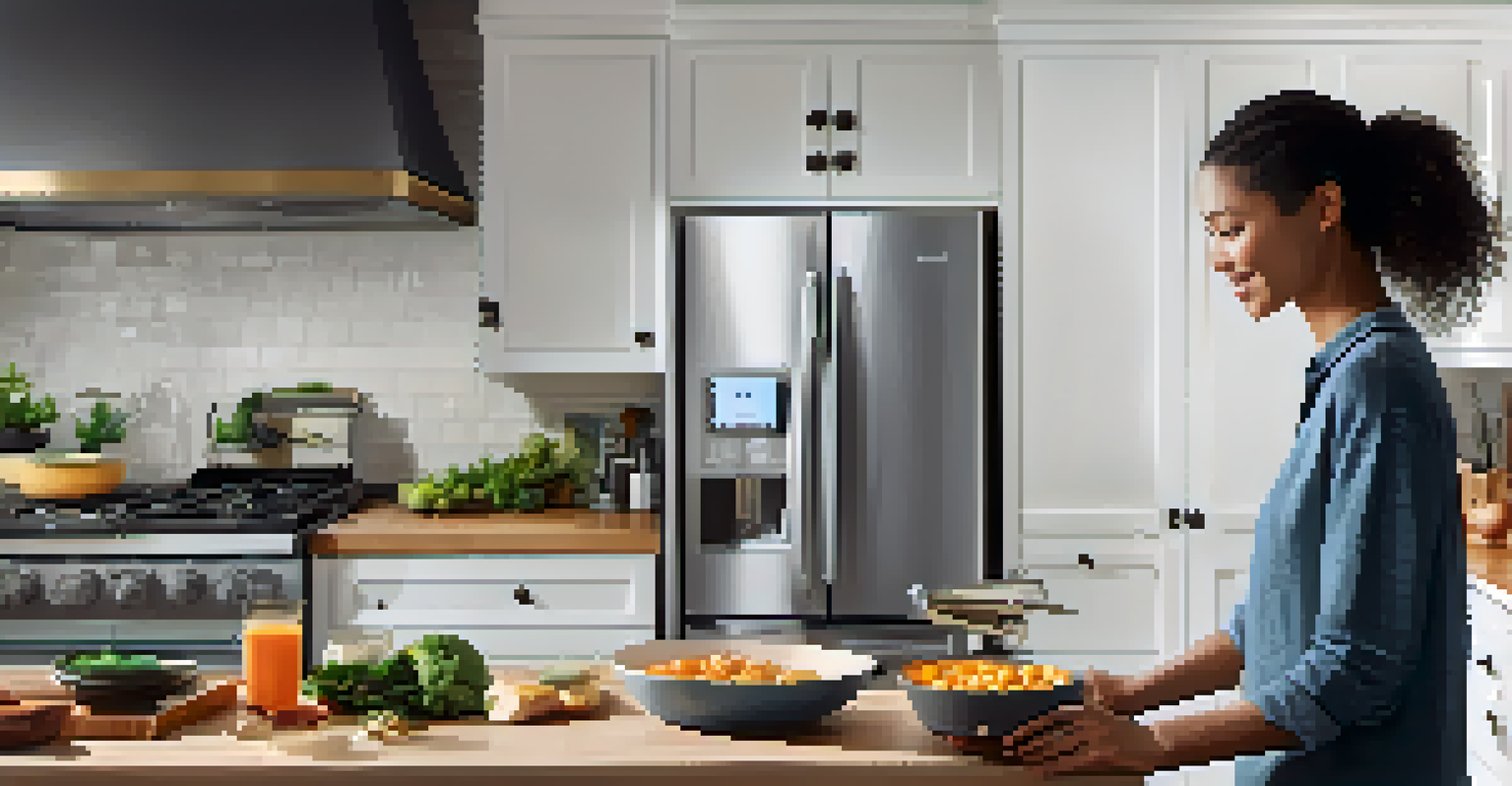Exploring Voice Control in Home Automation Systems

What is Voice Control in Home Automation Systems?
Voice control in home automation refers to the ability to operate smart devices using voice commands. Imagine walking into your home after a long day and simply saying, 'Turn on the lights,' and voilà! Your home responds instantly. This technology harnesses the power of artificial intelligence to understand and execute your requests, making life easier and more convenient.
The future is already here – it's just not very evenly distributed.
At its core, voice control integrates with various smart devices like lights, thermostats, and security systems, allowing users to manage them hands-free. For instance, you can adjust the thermostat while cooking dinner, all without lifting a finger. This seamless interaction enhances the user experience, making technology feel more intuitive.
Moreover, the rise of voice assistants like Amazon's Alexa, Google Assistant, and Apple's Siri has propelled voice control into the mainstream. These platforms not only recognize commands but also learn user preferences over time, creating a tailored environment that feels personal and responsive.
Benefits of Voice Control in Home Automation
Voice control offers numerous benefits, the most significant being convenience. Imagine your hands are full of groceries, and you can still command your smart home to unlock the door or turn on the lights. This hands-free operation is not just about ease; it's also about enhancing accessibility for seniors and individuals with disabilities.

In addition to convenience, voice control can help save time. Instead of fiddling with multiple apps or switches, a simple command can accomplish tasks in seconds. For example, saying, 'Goodnight,' can trigger a series of actions like turning off the lights, locking the doors, and adjusting the thermostat, all in one go.
Voice Control Enhances Convenience
Voice control allows users to operate smart devices hands-free, making everyday tasks simpler and more accessible.
Lastly, voice control can improve energy efficiency. By using voice commands to monitor and adjust devices, you can make more conscious decisions about your energy use. For instance, you can easily check if you left the lights on and turn them off with a quick command, contributing to a more eco-friendly home.
Popular Voice Control Devices for Home Automation
A variety of devices support voice control in home automation, making it easy to customize your setup. Smart speakers like the Amazon Echo and Google Nest Hub serve as the central hub for voice commands, connecting to various smart devices around your home. They allow you to control everything from lighting to entertainment systems with just your voice.
Technology is best when it brings people together.
Smart bulbs are another popular choice, enabling users to adjust lighting conditions simply by speaking. Brands like Philips Hue and LIFX offer a wide range of colors and brightness levels, making it easy to create the perfect ambiance for any occasion. Just imagine saying, 'Set the living room to cozy mode,' and watching the lights change to a warm glow.
Additionally, smart thermostats like the Nest Learning Thermostat can learn your habits and adjust the temperature accordingly. With voice control, you can say, 'Set the temperature to 72 degrees,' and the device will respond immediately. This level of integration makes managing your home environment not only easy but also efficient.
How Voice Recognition Technology Works
Voice recognition technology is the backbone of voice control systems, allowing devices to understand and process spoken commands. It starts with the user's voice being captured by a microphone, which converts sound waves into digital signals. These signals are then processed using algorithms that discern the words and phrases being spoken.
Natural Language Processing (NLP) plays a critical role in this technology. NLP enables devices to interpret not just the words but also the context behind them. For instance, if you say, 'Play my workout playlist,' the system understands the intent and retrieves the appropriate music, rather than just searching for the words individually.
Energy Efficiency Through Voice
By using voice commands to monitor and adjust devices, users can make more conscious decisions about their energy consumption.
Furthermore, machine learning enhances voice recognition by allowing systems to improve over time. As you interact more with your device, it learns your speech patterns, accents, and preferences, making it more accurate and personalized. This adaptability is what keeps users coming back to voice-controlled systems.
Privacy Concerns with Voice-Controlled Devices
While voice control offers convenience, it also raises important privacy concerns. Many users worry about the potential for their conversations to be recorded or monitored without consent. It's crucial to understand that most voice-controlled devices are always listening for their wake-up word, which can lead to unease about what information might be captured.
To mitigate these concerns, manufacturers have implemented various privacy features. For example, users can disable the microphone or delete voice recordings through app settings. It's essential to familiarize yourself with these features and take control of your privacy settings to ensure you're comfortable with how your data is being used.
Additionally, being mindful of what you say around voice-controlled devices can help maintain privacy. Avoid discussing sensitive topics in close proximity to these devices. By being proactive about your privacy, you can enjoy the benefits of voice control without compromising your personal information.
Setting Up Voice Control in Your Home
Setting up voice control in your home is a straightforward process that can be done in just a few steps. Start by choosing a voice assistant platform, such as Amazon Alexa or Google Assistant, and purchase a compatible smart speaker. Once your speaker is set up and connected to Wi-Fi, you can begin adding compatible smart devices to your network.
Next, ensure that your smart devices are also connected to the same Wi-Fi network as your voice assistant. Most devices come with user-friendly apps that guide you through the pairing process. Once everything is connected, you can start using voice commands to control your devices, creating a more integrated smart home experience.
Privacy is a Key Concern
While voice control provides great convenience, it also raises important privacy issues that users need to manage responsibly.
Lastly, take time to explore the features and capabilities of your voice assistant. Many platforms offer routines that allow you to automate multiple tasks with a single command, like setting the morning routine to turn on lights, adjust the thermostat, and read the news. By customizing your setup, you can maximize the benefits of voice control in your home.
The Future of Voice Control in Home Automation
The future of voice control in home automation looks incredibly promising as technology continues to advance. With the advent of artificial intelligence and machine learning, we can expect voice assistants to become even more intuitive and responsive. Imagine a system that not only follows commands but also anticipates your needs based on your daily routines.
Furthermore, as more devices become compatible with voice control, the possibilities for home automation will expand exponentially. Smart appliances, security systems, and even home entertainment setups are increasingly integrating voice capabilities. This trend signifies a shift toward a more interconnected and automated living environment.

Lastly, the rise of multilingual and regional voice recognition will make voice control accessible to a broader audience. As technology becomes more inclusive, more people can benefit from the convenience and efficiency that voice control offers, ultimately transforming how we interact with our homes.